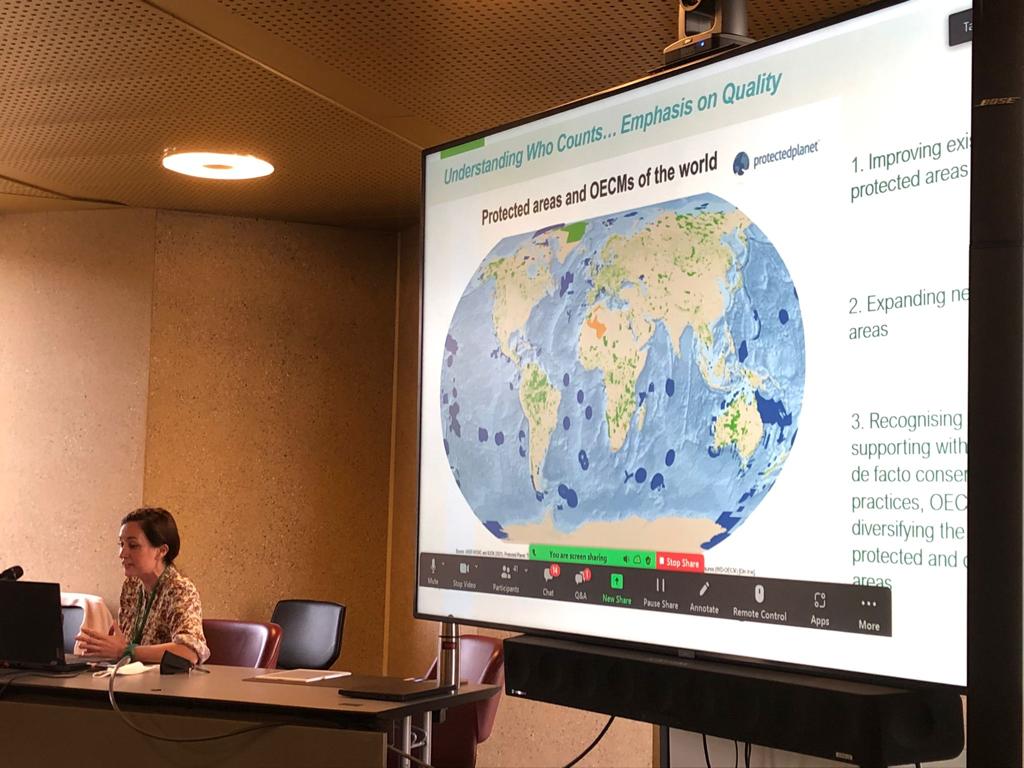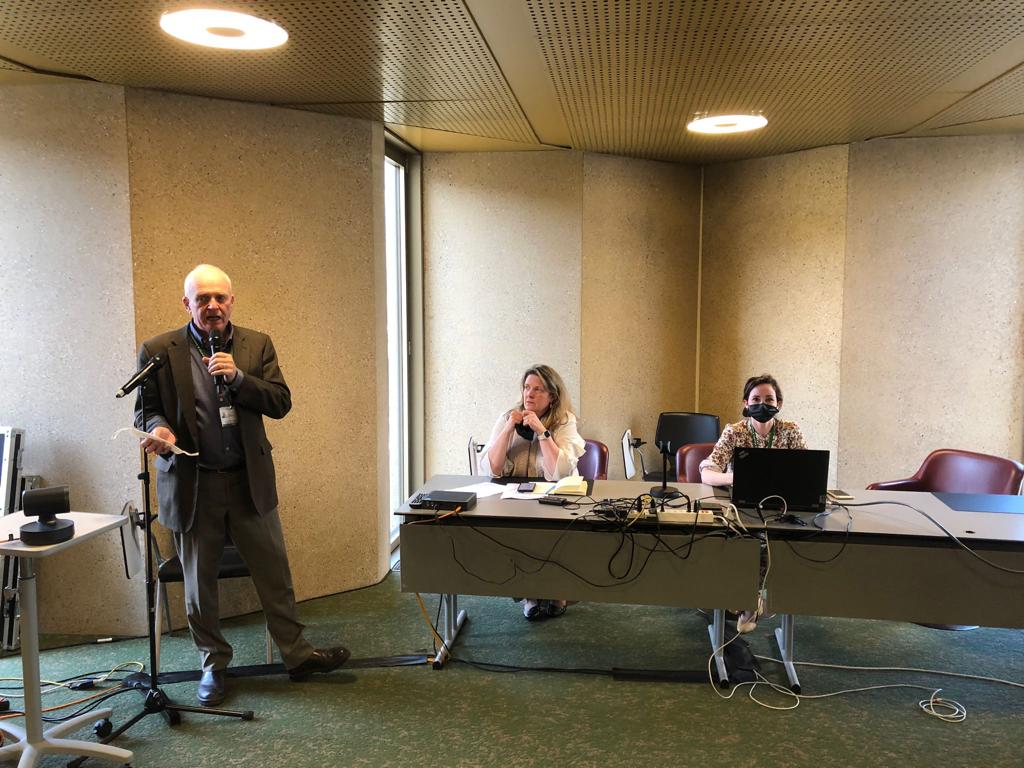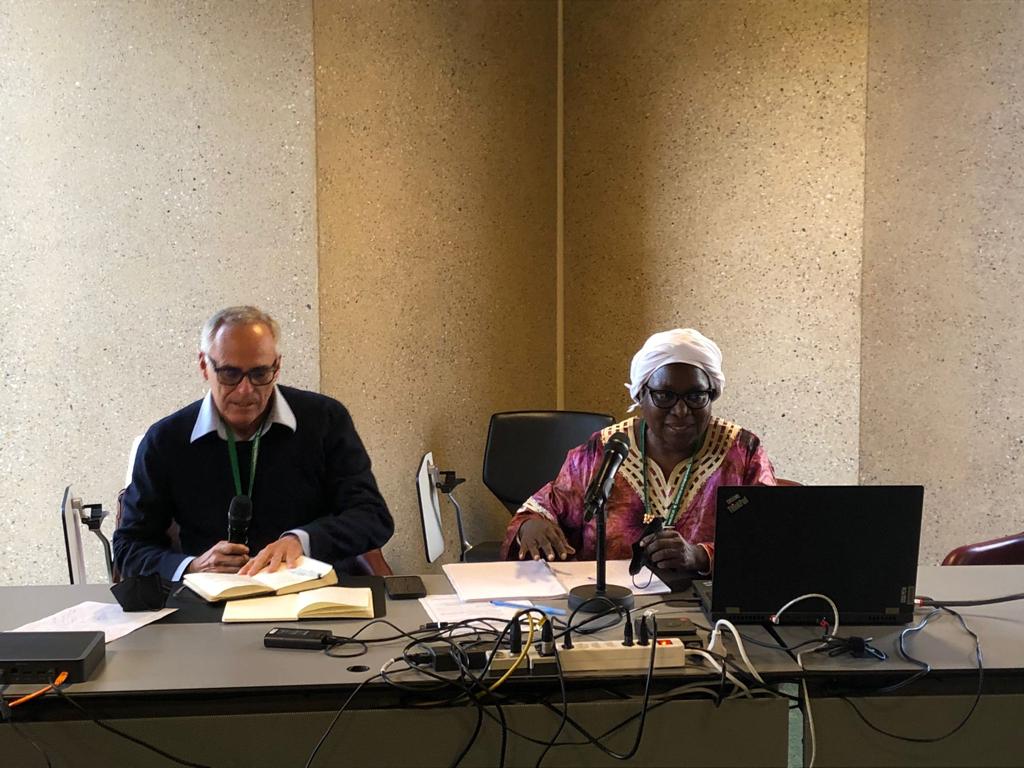Targets for effective area-based conservation under the 30x30 ambitions: What Counts? Who Counts?
On 25 March 2022, the IUCN Protected and Conserved Areas Team, together with WCPA, CEESP, the International Indigenous Forum on Biodiversity and ICCA Consortium organised a side event at the CBD meetings of the SBSTTA, SBI and OEWG in Geneva.
This Side Event was created as a forum to exchange on the much-discussed new draft target, “30 x 30” replacing the old Aichi Target 11, and will now potentially call for 30% of global land and waters to be conserved. It is, however, not just about the focus on spatial coverage. To be successful in conserving biodiversity, these areas must focus on quality, i.e. they must be equitably governed, effectively managed and achieving conservation outcomes. This event therefore sought to share knowledge and practice on how Parties and their supporting institutions, partners and donors can engage those who count, to then begin to expand appropriate recognition and support for the diverse and collective actions that conserve what counts for the draft Target 3 and 30x30 ambitions, through effective and equitable systems of protected areas and other effective area-based conservation measures.
Stephen Woodley, Vice Chair for Science and Biodiversity, IUCN World Commission on Protected Areas gave the solid scientific basis for setting a minimum of 30% of global land and water to be conserved. He described and explained the origins and definition of the term “other effective conservation measures” (OECMs), the guidance available and key concepts to bear in mind, including the importance of equitable conservation practices.
Building on this understanding of what should count, Jennifer Kelleher, Programme Lead for Governance, Equity and Rights asked the question who counts in these efforts, and how should these efforts in fact be counted? If there are three options to achieve the target: to improve existing protected areas, to create new protected areas and most likely, to recognise other effective conservation measures that are already in effect, then all three of these throw up different sets of governance questions. With the new proposed wording of “equitable governance” in the draft Target, guidance from the CBD and IUCN informs that it will be through the recognition of diverse actors and areas, such as Indigenous Peoples, local communities and other private actors that will make this Target happen. The recognition of these actors at the national level (or systems level) is key.
Joji Carino, Forest Peoples Programme (FPP), International Indigenous Forum on Biodiversity (IIFB) opened with the advice and guidance that in addition to the focus on governance, an acknowledgment of perspectives is critical. She presented the recently published briefing on Indigenous Peoples, local communities and area-based conservation targets stressing that the rights to lands, territories and resources that are customarily owned, occupied or otherwise used by Indigenous Peoples and other communities with collective rights, should be recognised and supported through national policies and laws.
This was followed by a variety local perspectives from diverse areas which would fall under target 3, a municipal nature resource and an ICCA, territory of life, both from Colombia and a military base and Indigenous peoples governed conservation area in Canada. A lively discussion, moderated by Kristen Walker of CEESP, touched upon several key points of the discussion, from the importance of free, prior and informed consent right through to the vital role of sustainable financing and partnership building.
The event closed with words from Lucy Mulenkei, IIFB and Trevor Sandwith, Director for the Centre for Conservation Action, IUCN who offered words of guidance. Lucy Mulenkei stressed that “We shouldn’t stop here, we really need to make sure that we continue, we need to work collectively together to be able to understand these processes. Some of the policies that exist discriminate and place Indigenous Peoples in a certain situation, but when they are included in the decision-making processes, and are part and parcel in terms of the planning, this will make life easier than ever before”. And Trevor Sandwith underlined that “The 30% target is important from a scientific point of view, but what we are talking about is the effective conservation of nature being the result…so what we have to do is to invoke the whole collective of actors who can make that happen.. we need governance and management that are both effective and are essential to conserve nature – And, moreover we need a society that is empowered to conserve, and so we need 30x30 by all of us”.
Watch the event here:






